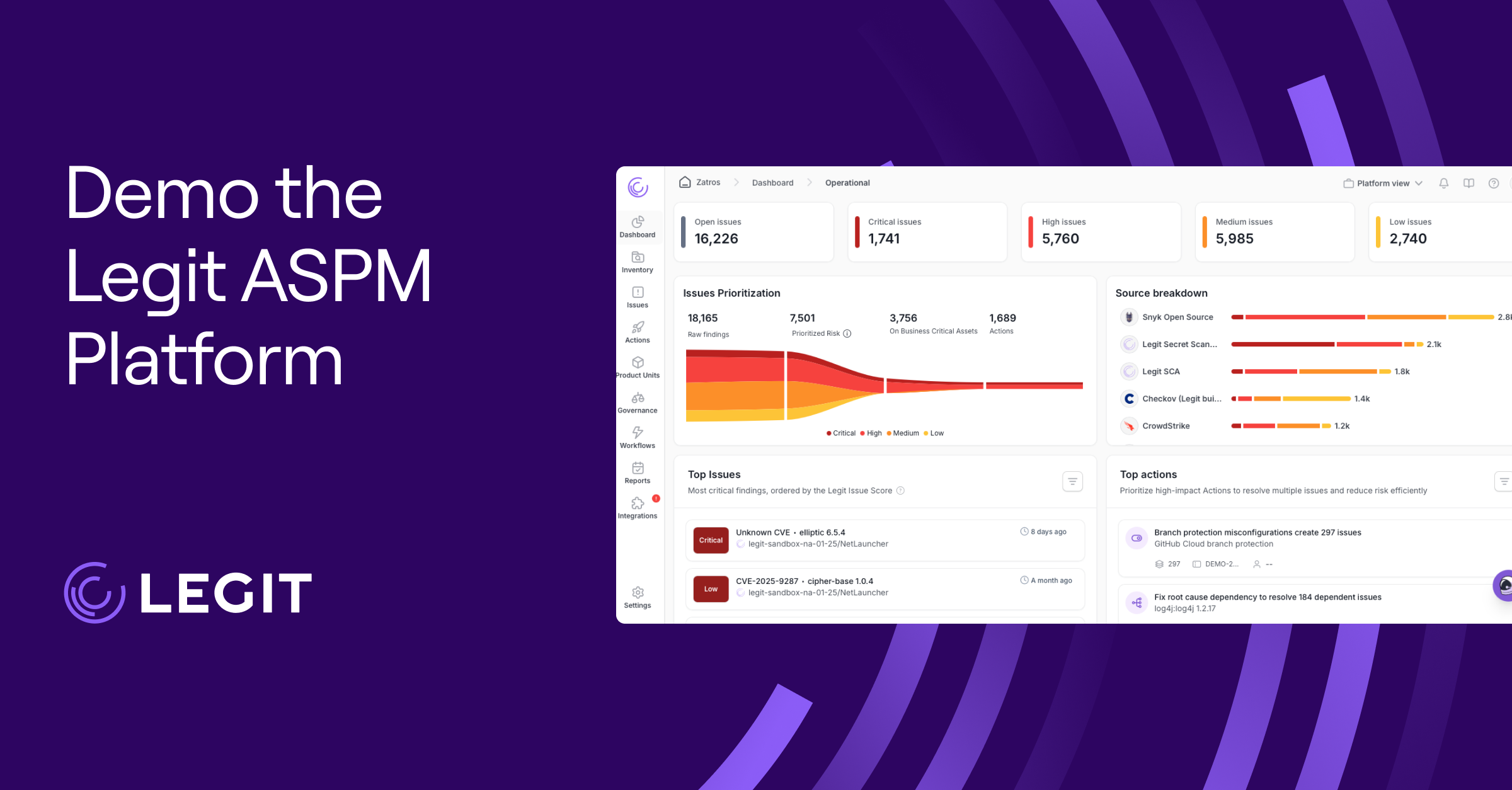Modern development cycles move fast, but attackers move faster. Securing applications has never been more urgent—especially because software plays an important role across industries, from finance to healthcare to software as a service (SaaS).
Application security tools help you stay ahead by identifying vulnerabilities early, protecting sensitive data, and reducing the risk of costly breaches.
This article will discuss the most effective application security tools available today and why integrating them into your SDLC is smart for long-term resilience.
What Are Application Security Tools?
Application security tools, or AppSec tools, are purpose-built solutions that help identify and manage risks within software applications throughout their lifecycle. They cover everything from insecure source code to risky dependencies, misconfigured APIs, and vulnerable deployment pipelines long before attackers can exploit them.
In a nutshell, these tools scan the SDLC for issues. Many integrate directly into developer workflows to provide real-time feedback, which lets teams shift security left and address problems early when they’re cheaper and easier to fix.
AppSec covers many capabilities, including static and dynamic code analysis, runtime protection, software composition analysis, and secrets detection. Some tools offer deep visibility into continuous integration and continuous delivery (CI/CD) pipelines, while others focus on post-deployment monitoring or governance.
Together, AppSec tools form a layered defense that helps organizations keep up with evolving threats, reduce security debt, and build trust in the software they deliver.
10 Application Security Tools
Here are some of the most common types of application security testing tools to detect, prioritize, and respond to SDLC risks without slowing delivery.
1. Static Application Security Testing Tools
Static application security testing (SAST) tools analyze source or compiled code without executing it, helping developers catch issues like missing input validation or insecure data handling before deployment. They're great for early-stage testing and IDE integration.
2. Dynamic Application Security Testing Tools
Dynamic application security testing (DAST) tools probe running applications for flaws using simulated attacks, which makes them ideal for catching runtime issues that static tools miss. They help identify broken authentication, session handling bugs, and more.
Since DAST tools don't require access to the codebase, they're also suitable for black-box testing. This application security scanning is especially effective for surfacing vulnerabilities commonly seen in production environments. Tools like Burp Suite and OWASP ZAP remain popular here and are commonly used in manual testing and automated pipelines.
3. Software Composition Analysis Tools
Software composition analysis (SCA) tools scan your application’s dependencies to flag outdated or vulnerable open-source packages. Since they focus on the software supply chain, they differ from SAST in both method and scope, focusing more on analysis and documentation than testing.
4. Secrets Detection Tools
Secrets scanners help prevent the accidental exposure of sensitive credentials like API keys and database passwords. They scan codebases, config files, and commits for common secret patterns and can often validate whether a found secret is live. Tools like Trufflehog or Gitleaks are good examples and can both evaluate if credentials are reachable or usable in production.
5. Interactive Application Security Testing Tools
Interactive application security testing (IAST) tools blend static analysis's precision with dynamic testing's realism. By running alongside the app in a test environment, they observe code behavior in real time and identify vulnerabilities with greater accuracy.
IAST tools have become common among modern security code review tools that integrate directly into development environments. Unlike a traditional vulnerability scanner, IAST observes runtime behavior to reduce noise and surface only exploitable issues, making it one of the most effective security testing tools in software testing.
6. Infrastructure as Code Scanning Tools
Infrastructure as code (IaC) scanners evaluate cloud infrastructure definitions for security risks before teams deploy anything. They look for risky configurations in Terraform, Kubernetes manifests, or CloudFormation templates, such as open security groups or over-permissioned roles. Tools like Checkov and KICS catch these misconfigurations early, making cloud-native security proactive rather than reactive.
7. Software Bill of Materials Tools
Software bill of materials (SBOM) tools generate inventories of all components in your codebase, including third-party packages, licenses, and version numbers. Security teams use them to respond quickly when new security vulnerabilities are disclosed and to maintain transparency across the software supply chain.
8. Application Security Posture Management Tools
Application security posture management (ASPM) tools combine all your AppSec signals so you’re not chasing down findings in different dashboards. They aggregate outputs from SAST, DAST, SCA, secrets scanners, and more, offering a clear picture of your security posture across the SDLC.
ASPM tools like Legit Security help prioritize issues based on exploitability, business context, and actual risk. Legit Security combines secrets scanning and SBOM for a holistic look at your security posture. If you aren’t sure what tool is most useful, start here.
9. Web Application Firewall Tools
Web Application Firewalls (WAFs) protect your apps from common attack patterns like SQL injection, cross-site scripting (XSS), and bot abuse by filtering malicious traffic in real time.
Rule-based WAFs require constant tuning, especially for dynamic environments. Newer options better align with web application security requirements by adapting to production changes without continuous reconfiguration.
10. CI/CD Security Tools
CI/CD security tools enforce policies directly in your development workflows. They validate code, run automated scans, block risky deployments, and flag violations early. These tools help embed application security software into the daily work of engineering—not as a barrier, but as a built-in safeguard.
How to Choose the Right Application Security Tool
Not every organization needs every type of application security tool, and choosing the right ones depends on your environment, risk profile, and development workflow.
If you're just beginning to formalize your security efforts, focus on SAST, SCA, and secrets detection. These provide quick wins without requiring significant shifts in your team's work.
More mature teams may benefit from tools such as DAST, IaC scanning, and IAST that offer deeper runtime insights.
It’s also important to consider how well a tool integrates with your existing systems, including source code repositories and ticketing platforms. Look for solutions that support your tech stack, minimize developer friction, and provide meaningful prioritization so teams can fix what matters most. Ultimately, the best tools are the ones your team will use and trust to guide their decisions.
Benefits of Application Security Tools
Application security tools give you a faster, more scalable way to reduce risk. They help you detect known and emerging threats before they become incidents and allow teams to fix vulnerabilities with less rework. Here are some more of their benefits:
- Early visibility: By layering in tools like SAST, DAST, and SCA throughout development, you gain continuous visibility into security gaps while code is still fresh in a developer’s mind.
- Automation: These tools also automate and standardize the testing process, enabling a consistent vulnerability assessment across different builds and environments.
- Thoughtful decision-making: Application security tools promote DevSecOps by embedding security checks into developer workflows so security can keep pace with delivery.
- Compliance: For compliance-heavy industries, security tools help meet regulatory requirements—like the Payment Card Industry Data Security Standard (PCI DSS) or the Health Insurance Portability and Accountability Act (HIPAA)—by documenting controls and generating evidence during audits. At scale, teams build security directly into designing and delivering software.
Boost Your Application Security Tools With Legit Security
Legit Security strengthens your application security program by combining all tools and signals into one unified platform. It integrates seamlessly with your existing continuous integration and CI/CD pipelines, source code repositories, and IaC tools to provide complete visibility across your software development lifecycle.
Instead of jumping between scanners or dashboards, your teams get real-time context, risk-based prioritization, and automated enforcement all in one place. That means faster remediation and stronger collaboration between engineering and security from day one.
Download our new whitepaper.


